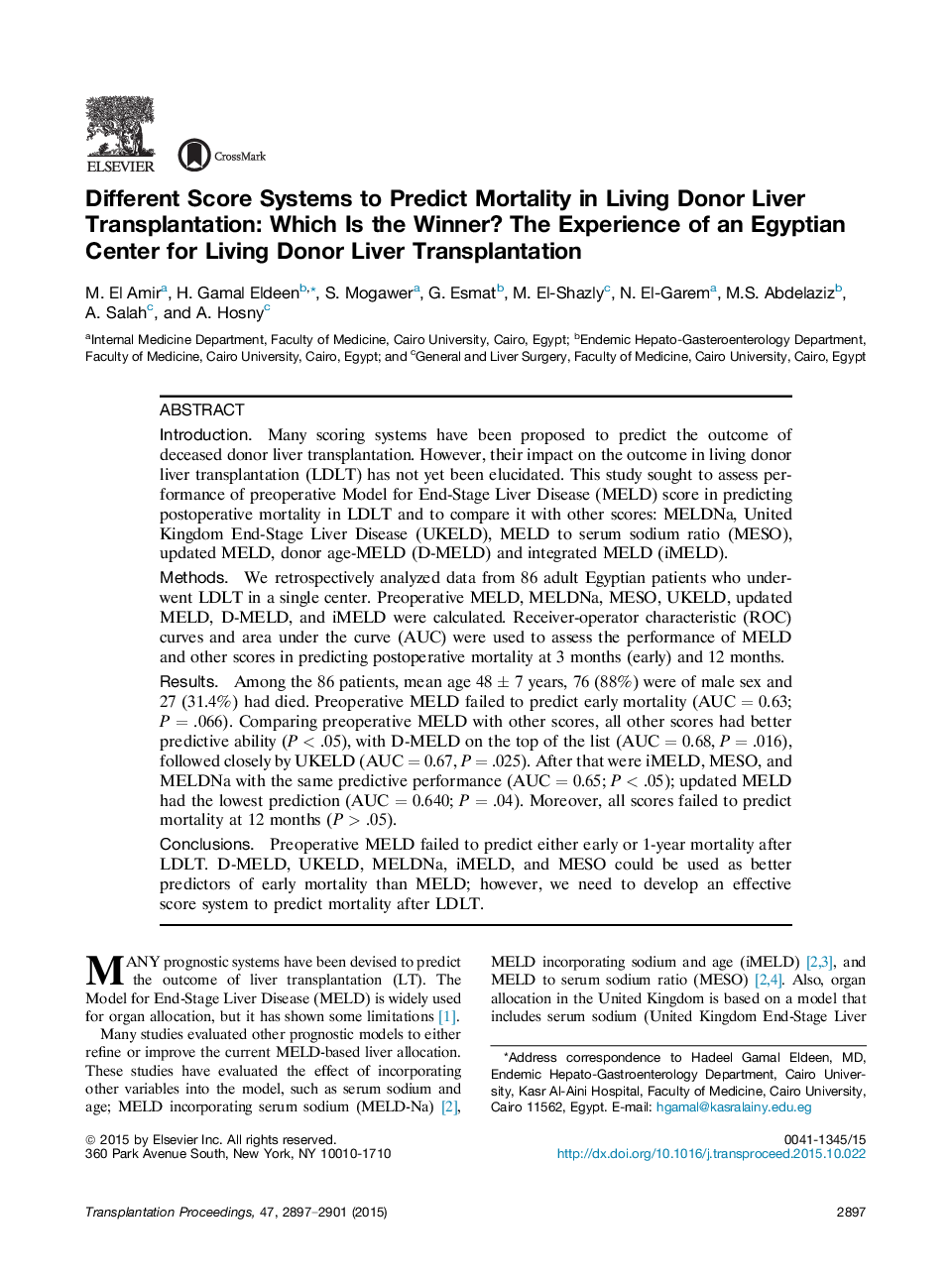| کد مقاله | کد نشریه | سال انتشار | مقاله انگلیسی | نسخه تمام متن |
|---|---|---|---|---|
| 4255841 | 1284500 | 2015 | 5 صفحه PDF | دانلود رایگان |
• The impact of proposed score systems to predict the outcome in living donor liver transplantation (LDLT) has not yet been elucidated.
• We aimed to assess performance of preoperative MELD score in predicting postoperative mortality in LDLT and to compare it with other scores (D-MELD, UKELD, MELDNa, iMELD and MESO).
• Receiver-operator characteristic (ROC) curves and area under the curve (AUC) were used to assess the performance of MELD and other scores in predicting postoperative mortality at 3 months (early) and 12 months.
• Preoperative MELD failed to predict either early or 1-year mortality after LDLT. D-MELD, UKELD, MELDNa, iMELD, and MESO could be used as better predictors of early mortality than MELD.
IntroductionMany scoring systems have been proposed to predict the outcome of deceased donor liver transplantation. However, their impact on the outcome in living donor liver transplantation (LDLT) has not yet been elucidated. This study sought to assess performance of preoperative Model for End-Stage Liver Disease (MELD) score in predicting postoperative mortality in LDLT and to compare it with other scores: MELDNa, United Kingdom End-Stage Liver Disease (UKELD), MELD to serum sodium ratio (MESO), updated MELD, donor age-MELD (D-MELD) and integrated MELD (iMELD).MethodsWe retrospectively analyzed data from 86 adult Egyptian patients who underwent LDLT in a single center. Preoperative MELD, MELDNa, MESO, UKELD, updated MELD, D-MELD, and iMELD were calculated. Receiver-operator characteristic (ROC) curves and area under the curve (AUC) were used to assess the performance of MELD and other scores in predicting postoperative mortality at 3 months (early) and 12 months.ResultsAmong the 86 patients, mean age 48 ± 7 years, 76 (88%) were of male sex and 27 (31.4%) had died. Preoperative MELD failed to predict early mortality (AUC = 0.63; P = .066). Comparing preoperative MELD with other scores, all other scores had better predictive ability (P < .05), with D-MELD on the top of the list (AUC = 0.68, P = .016), followed closely by UKELD (AUC = 0.67, P = .025). After that were iMELD, MESO, and MELDNa with the same predictive performance (AUC = 0.65; P < .05); updated MELD had the lowest prediction (AUC = 0.640; P = .04). Moreover, all scores failed to predict mortality at 12 months (P > .05).ConclusionsPreoperative MELD failed to predict either early or 1-year mortality after LDLT. D-MELD, UKELD, MELDNa, iMELD, and MESO could be used as better predictors of early mortality than MELD; however, we need to develop an effective score system to predict mortality after LDLT.
Journal: Transplantation Proceedings - Volume 47, Issue 10, December 2015, Pages 2897–2901
